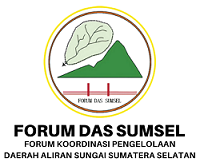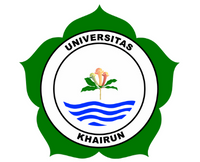Bioconversion of Coffee Fruit Bark Waste into Commercially Valued, Healthy, and High-Quality Compost Fertilizer as a Solution for Community Economic Independence and Environmental Sustainability
Abstract
Coffee is one of the plantation commodities in Indonesia which has quite high economic value among other plantation commodities such as cocoa and tea. Ulubelu District is one of the largest coffee producing areas in Lampung Province with a land area of 7,549 hectares with a production capacity of 4,970 tons/year which has the potential to produce 7.8 tons/year of coffee fruit skin waste. So there is a need for a solution to process coffee fruit skin waste into a product that has sales value and use value for the community. The aim of this community service activity is as an alternative to increasing community knowledge and skills in utilizing local potential into local products. The method applied in this service is to carry out several stages such as pre-activity, outreach, implementation and evaluation of activities. The result of carrying out this service activity is an increase in the community's knowledge and skills in utilizing and processing the potential of coffee fruit skin waste into healthy and quality compost. Apart from that, the aim of carrying out this service is to create a new business community so that it can improve community welfare from the community's ability to utilize local potential into local products that have marketable value.
Full Text:
PDFReferences
Agus, C., Faridah, E., Wulandari, D., & Purwanto, H. (2014). Peran Mikroba Starter Dalam Dekomposisi Kotoran Ternak Dan Perbaikan Kualitas Pupuk Kandang ( The Role of Microbial Starter in Animal Dung Decomposition and Manure Quality Improvement ) Fakultas Kehutanan UGM , Jalan Agro Bulaksumur Yogyakarta 55281 KP4 U. Jurnal Manusia Dan Lingkungan, 21(2), 179–187.
BPS [Badan Pusat Statistik] Provinsi Lampung. (2021). Statistik Perkebunan Kopi di Provinsi Lampung 2021. Badan Pusat Statistik. Bengkulu
Larasati, A. A., & Puspikawati, S. I. (2019). Pengolahan Sampah Sayuran Menjadi Kompos Dengan Metode Takakura. Ikesma, 81. https://doi.org/10.19184/ikesma.v15i2.14156
Linda Noviana, & Sukwika, T. (2020). Pemanfaatan Sampah Organik Sebagai Pupuk Kompos Ramah Lingkungan Di Kelurahan Bhaktijaya Depok. Jurnal Pengabdian UntukMu NegeRI, 4(2), 237–241. https://doi.org/10.37859/jpumri.v4i2.2155
Maulida, D., & Erfa, L. (2018). Teknologi Pemanfaatan Limbah Kulit Kopi Melalui Pelatihan Pembuatan Kompos Technology of Utilizing Coffee Husk Waste Through Compost Making Training. Jurnal Pertanian, 50–56.
Nurlianti, & Prihanani. (2018). Peran Dekompeser dalam Pembuatan Kompos dari Limbah Padi dan Limbah Sawit. Jurnal Agroqua, 16(1), 32–41.
Riga, R., Sari, T. K., Agustina, D., Fitri, B. Y., Ikhsan, M. H., Pratama, F. H., & Oktria, W. (2022). Pembuatan Pupuk Kompos Dari Limbah Kulit Kopi Di Daerah Penghasil Kopi Nagari Koto Tuo, Sumatera Barat. Jurnal Pengabdian Pada Masyarakat, 7(3), 584–591. https://doi.org/10.30653/002.202273.145
Triawan, D. A., Banon, C., & Adfa, M. (2020). Biokonversi Kulit Kopi Menjadi Pupuk Kompos Pada Kelompok Tani Pangestu Rakyat Kabupaten Rejang Lebong. Jurnal Pengabdian Al-Ikhlas, 5(2), 159–165. https://doi.org/10.31602/jpaiuniska.v5i2.2817
Usmayadi, D., Purwaningsih, P., & Maulidi, M. (2022). Pengaruh Kompos Limbah Kulit Kopi Dan Pupuk Organik Cair Keong Mas Terhadap Pertumbuhan Dan Hasil Buncis Pada Tanah Aluvial. Jurnal Sains Pertanian Equator, 11(4), 166. https://doi.org/10.26418/jspe.v11i4.58127
Wandhira, A. A., & Mulasari, S. A. (2013). Gambaran Percobaan Penambahan EM-4 Dan Air Cucian Beras Terhadap Kecepatan Proses Pengomposan. Jurnal Kesehatan Masyarakat, 6(2), 101–112. https://eprints.uad.ac.id/8014/1/130-252-1-SM.pdf
Yusuf, Y., Ibnu Prayoga, G., Christianingrum, C., & Yunita, A. (2022). Peningkatan Kapasitas Masyarakat melalui Pelatihan Pembuatan Kompos Blok dan Pelatihan Budidaya Jamur Tiram. Dharma Raflesia : Jurnal Ilmiah Pengembangan Dan Penerapan IPTEKS, 20(2), 234–247. https://doi.org/10.33369/dr.v20i2.22677
DOI: https://doi.org/10.32502/altifani.v4i2.7951
Refbacks
- There are currently no refbacks.
Copyright (c) 2024 Altifani Journal: International Journal of Community Engagement
License URL: https://creativecommons.org/licenses/by-sa/4.0/
Indexed by:
Altifani Journal: International Journal of Community Engagement
Diterbitkan oleh Fakultas Pertanian, Universitas Muhammadiyah Palembang
Contact Person:
Rika Puspita Sari, M.Si (HP/WA: +62 813-7490-0341)
Klinik Publikasi Pertanian, Faculty of Agriculture, Universitas Muhamamdiyah Palembang
JL. Jend.A.Yani 13 Ulu Palembang, South Sumatra, Indonesia
Tel. (+62)711-511731; Email: kppfpump@gmail.com; Website: https://jurnal.um-palembang.ac.id/altifani

This work is licensed under a Creative Commons Attribution 4.0 International License.









.png)
14.png)





